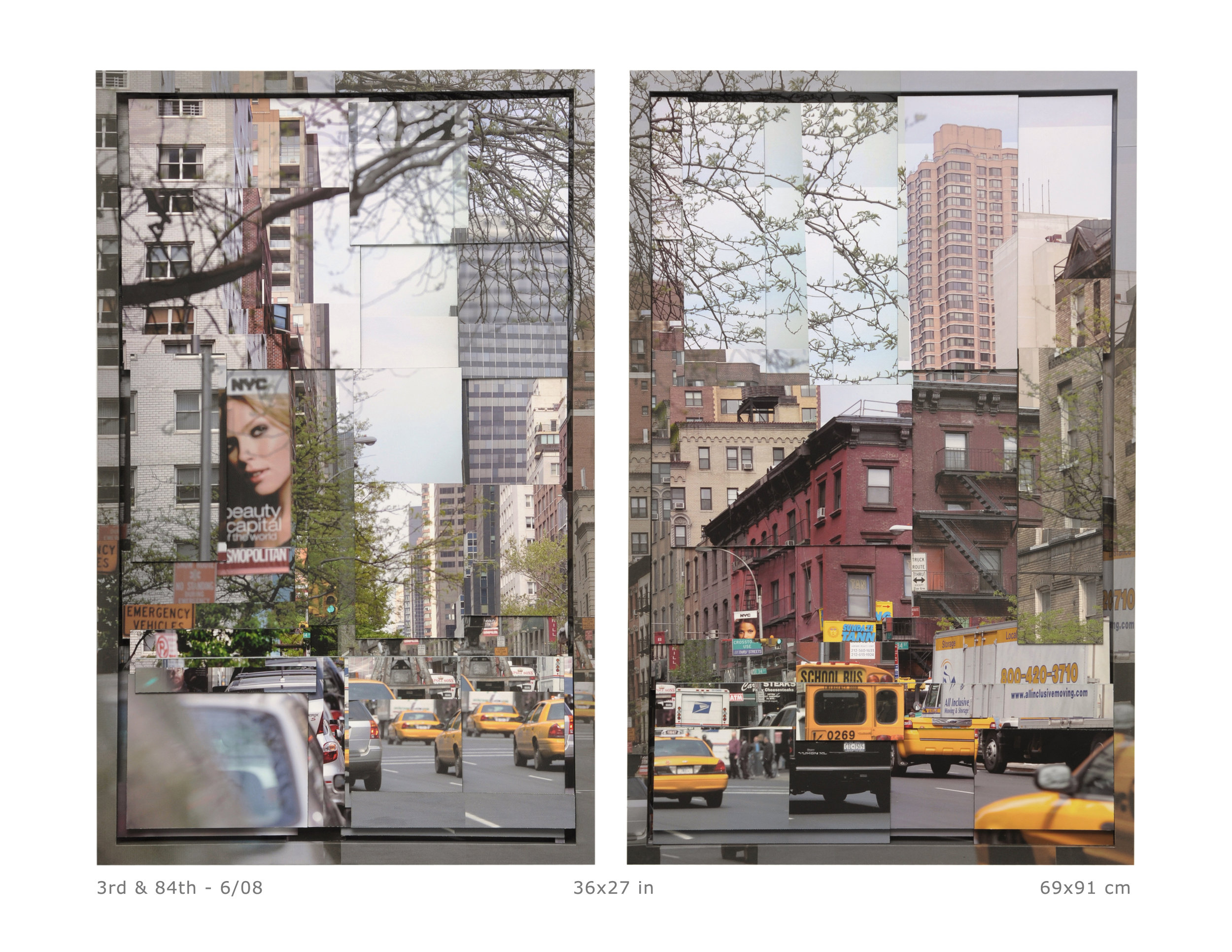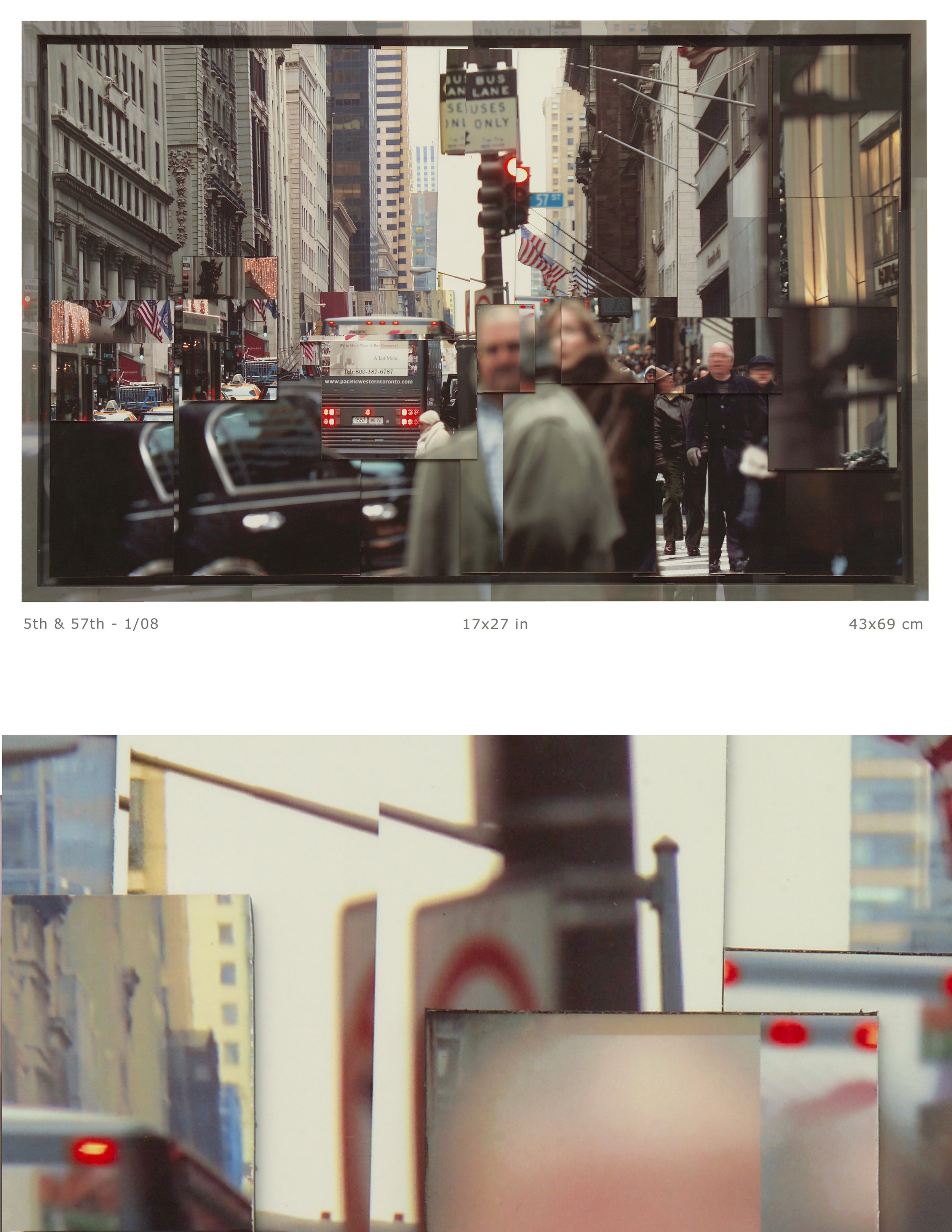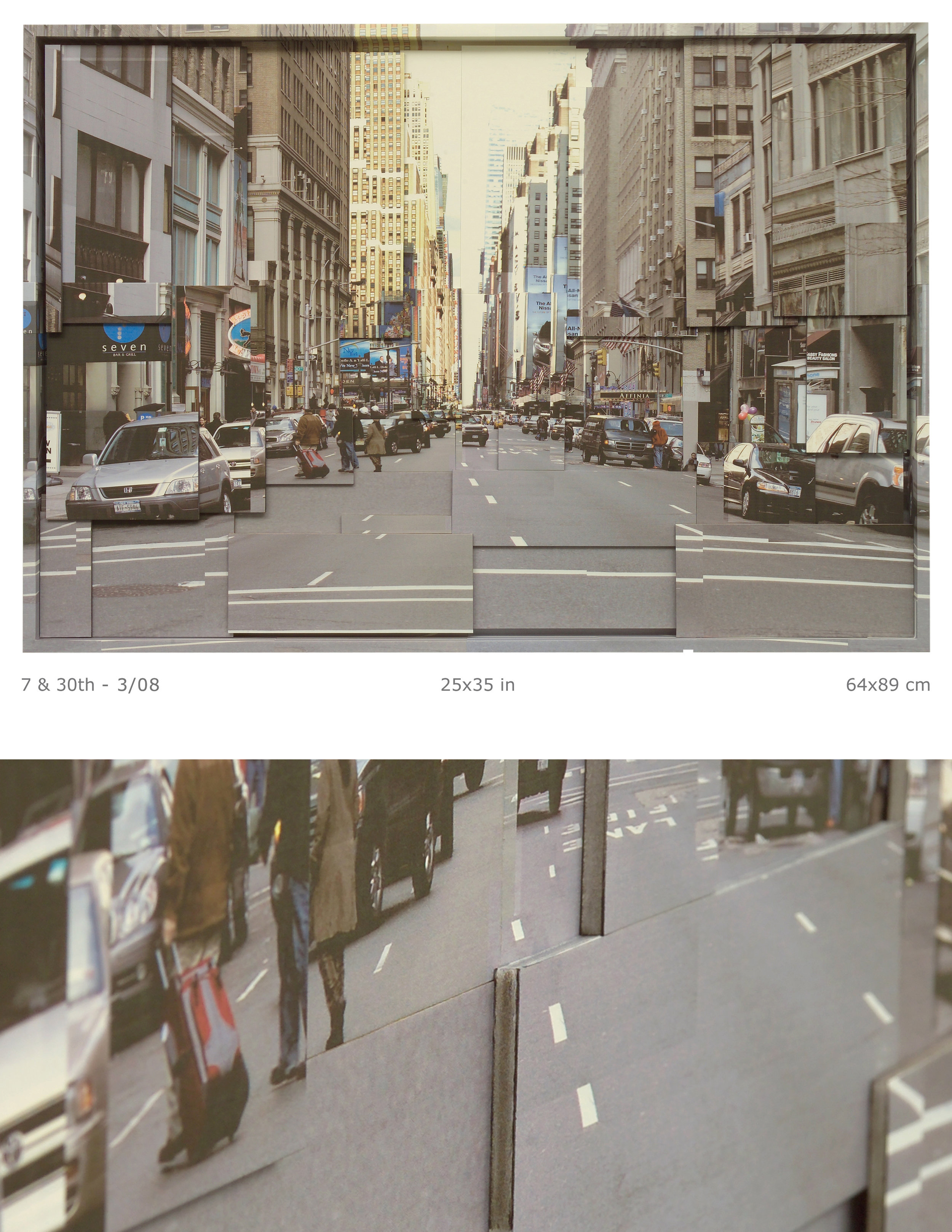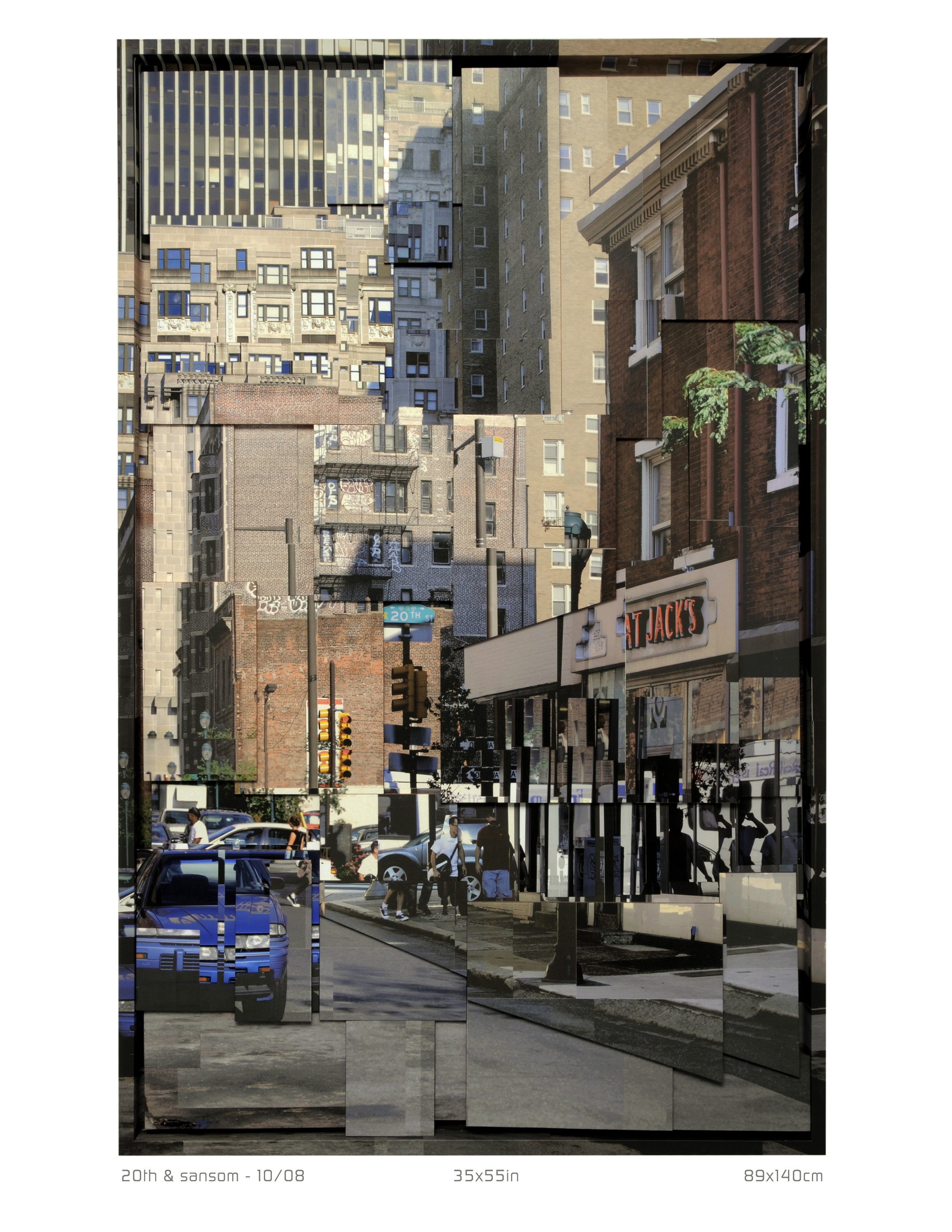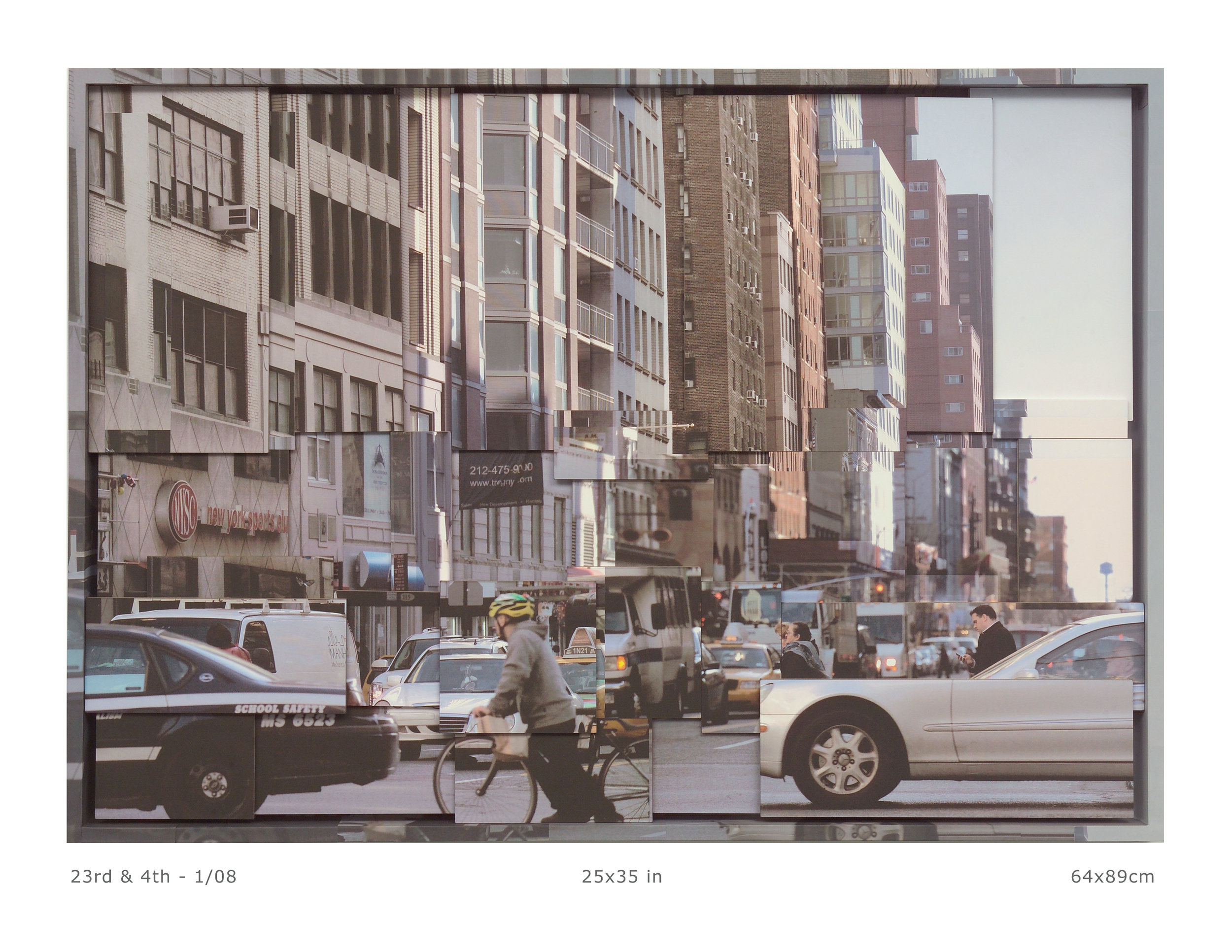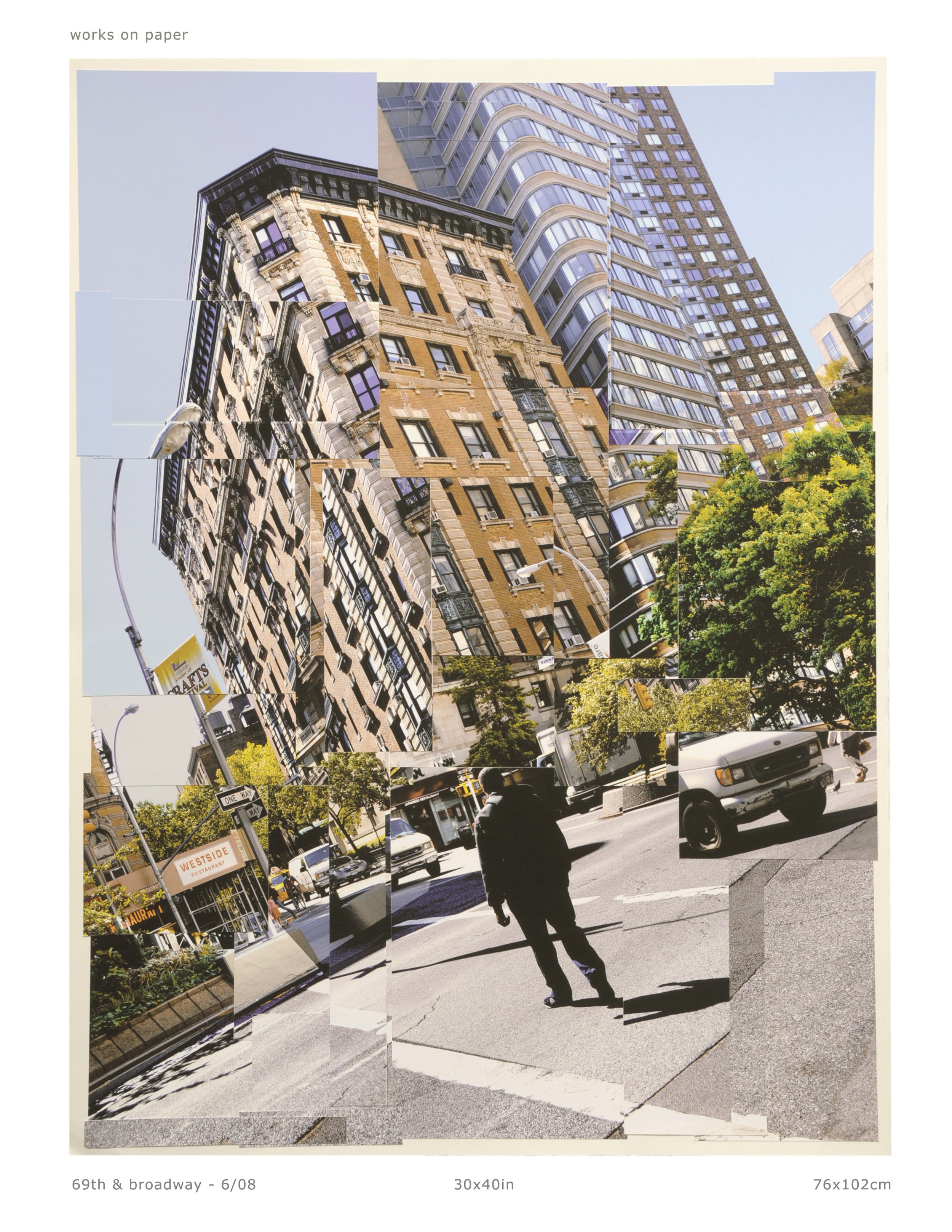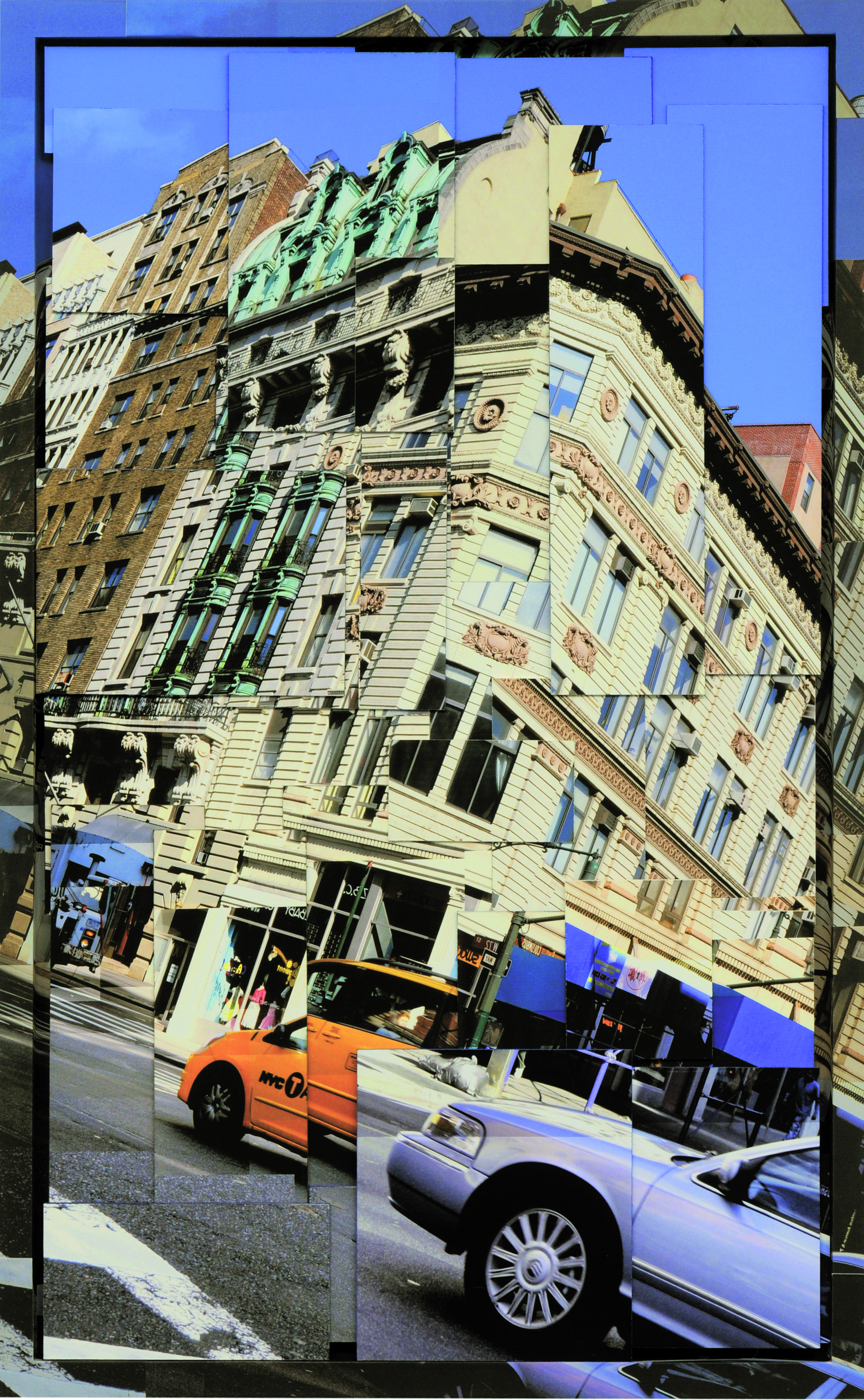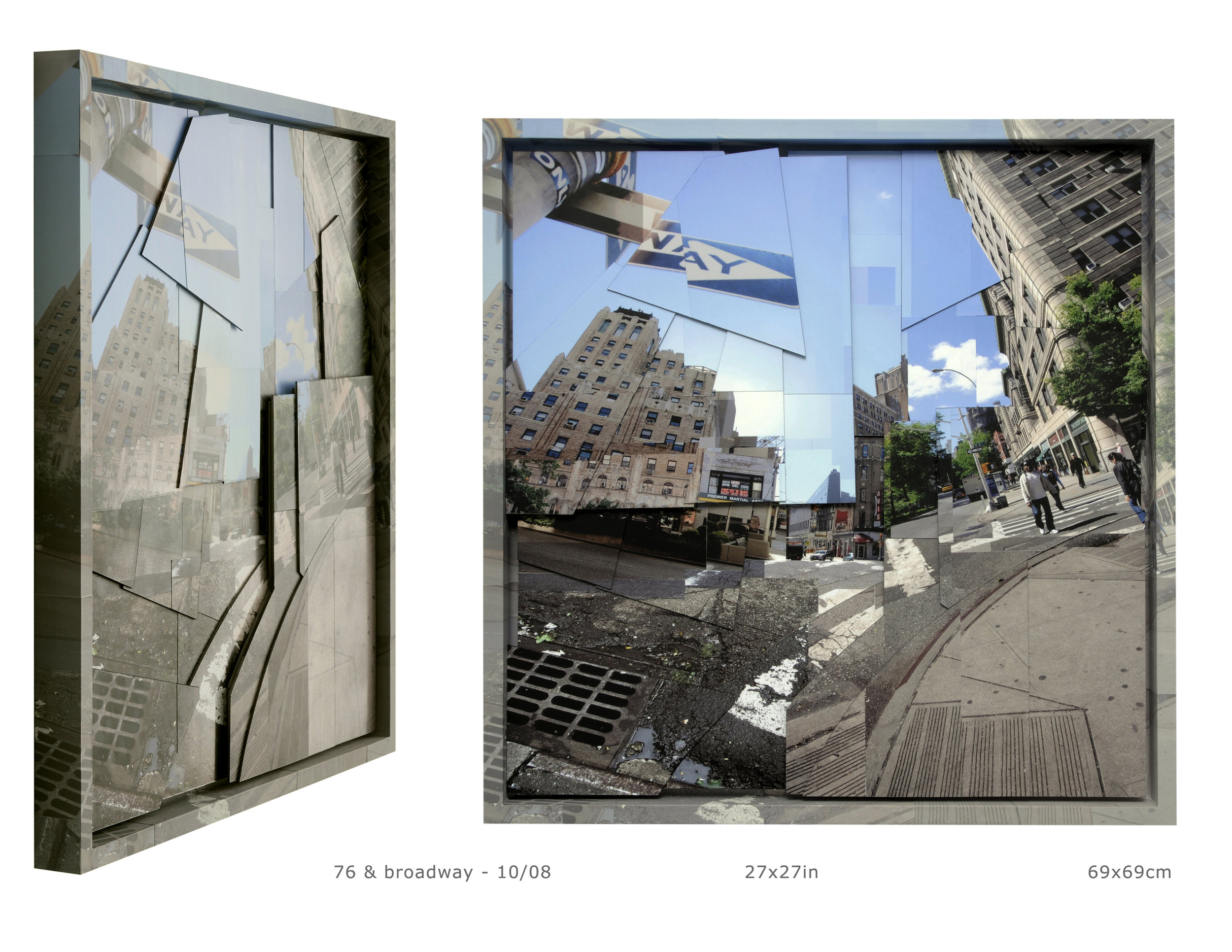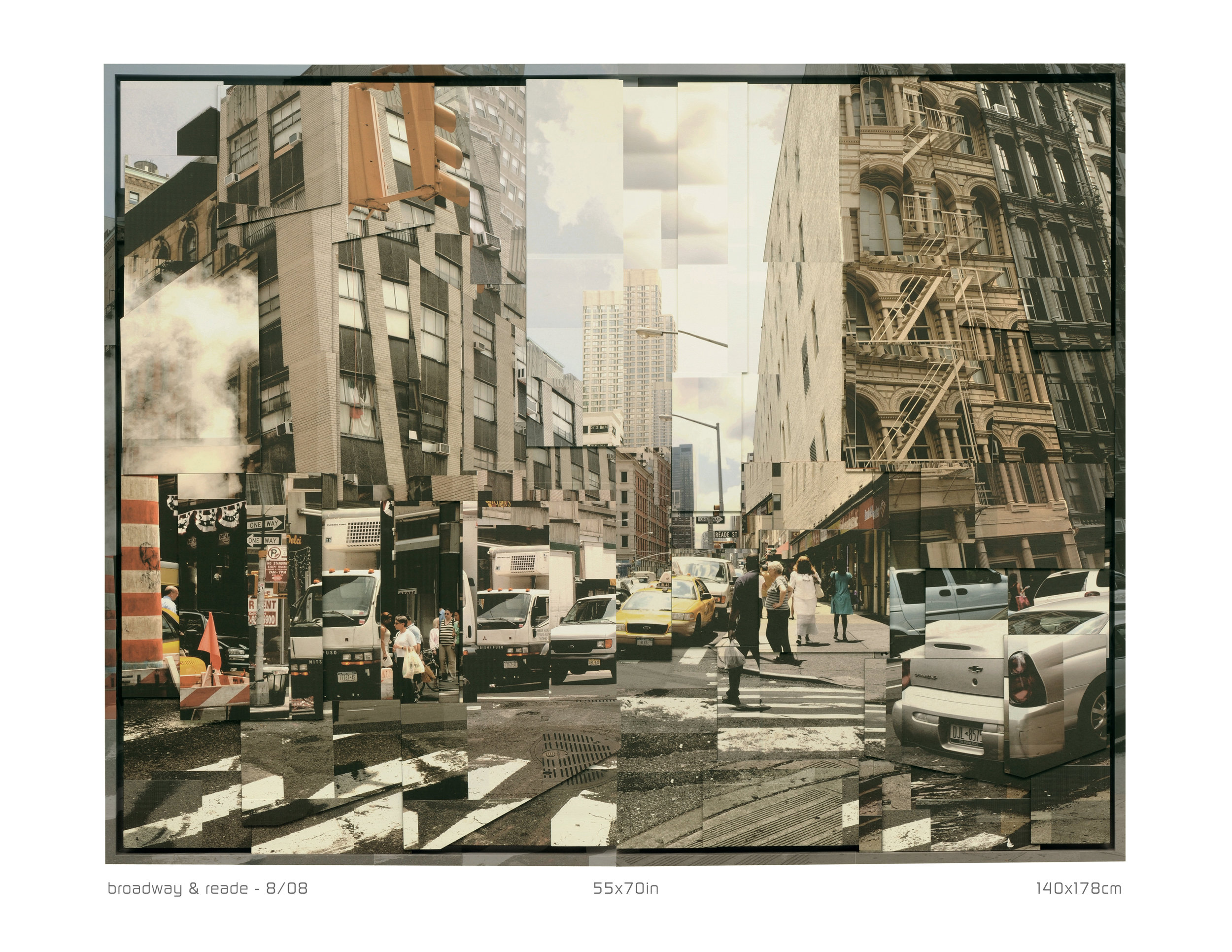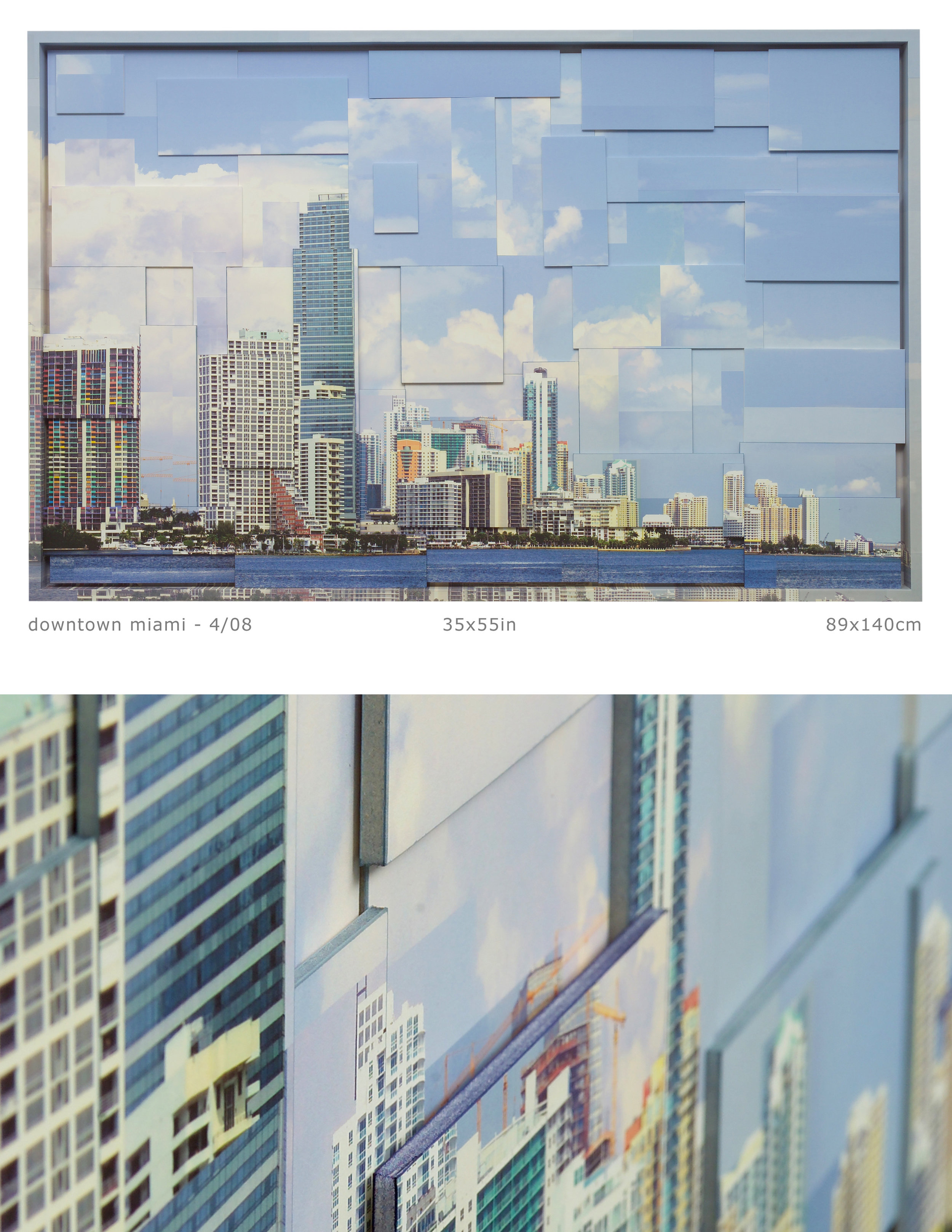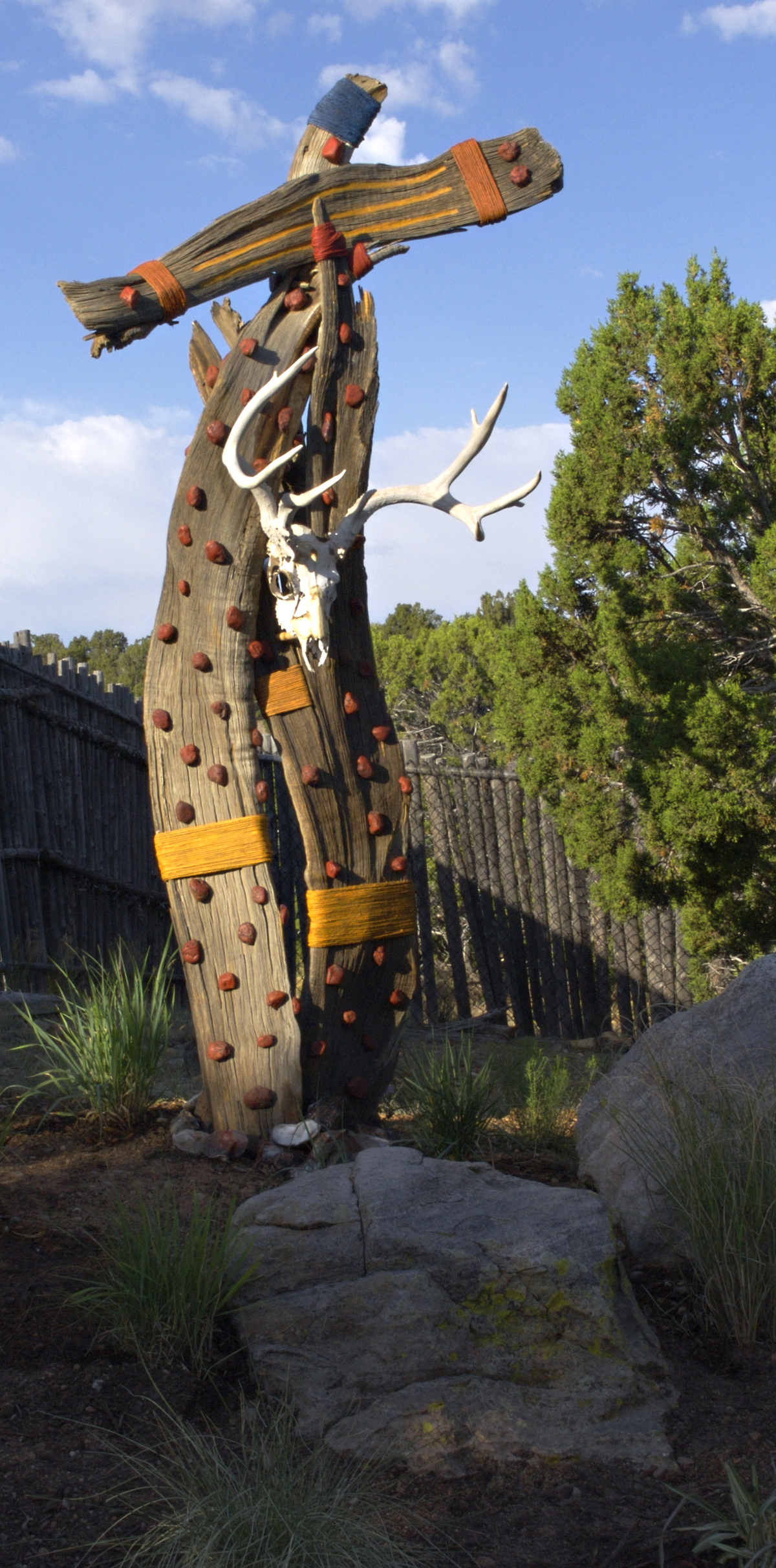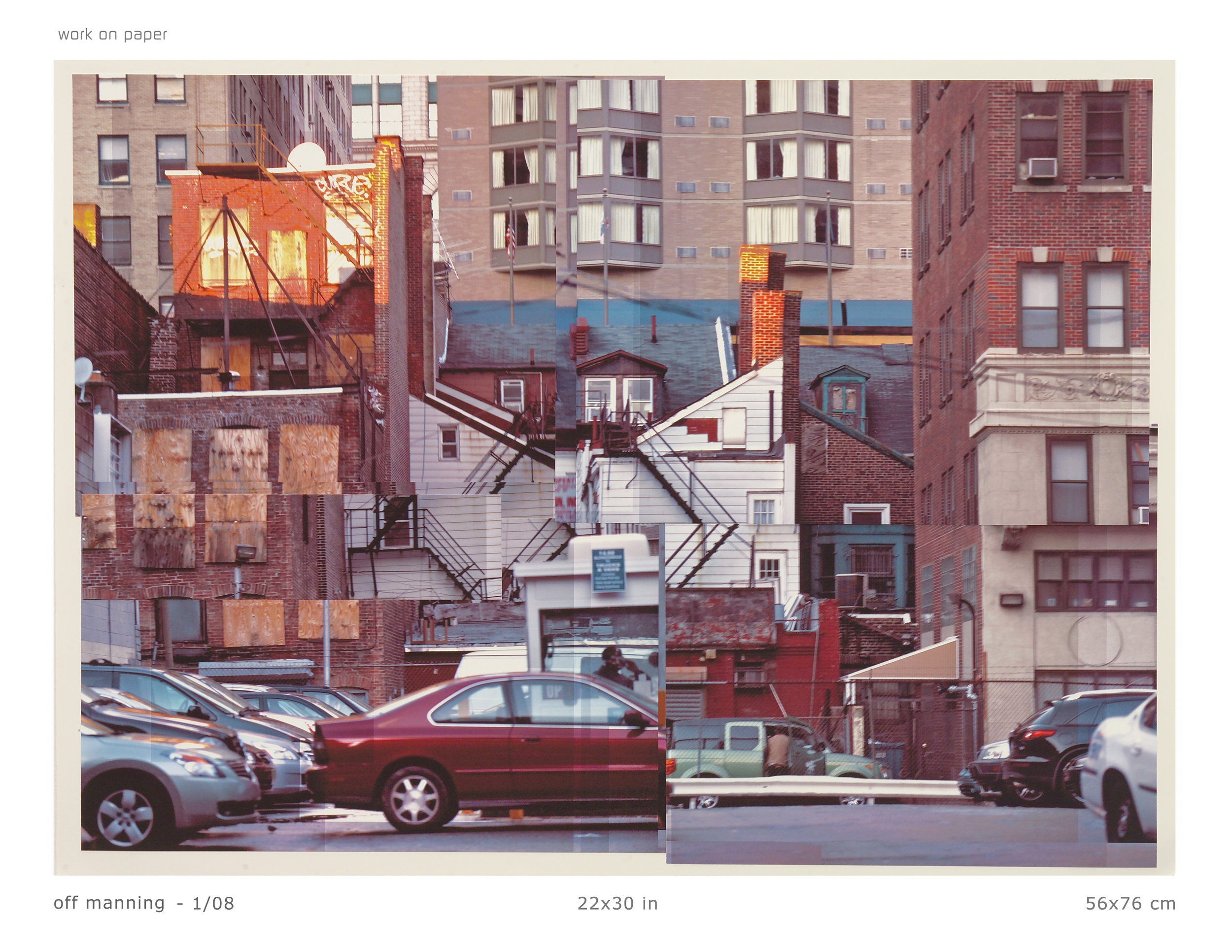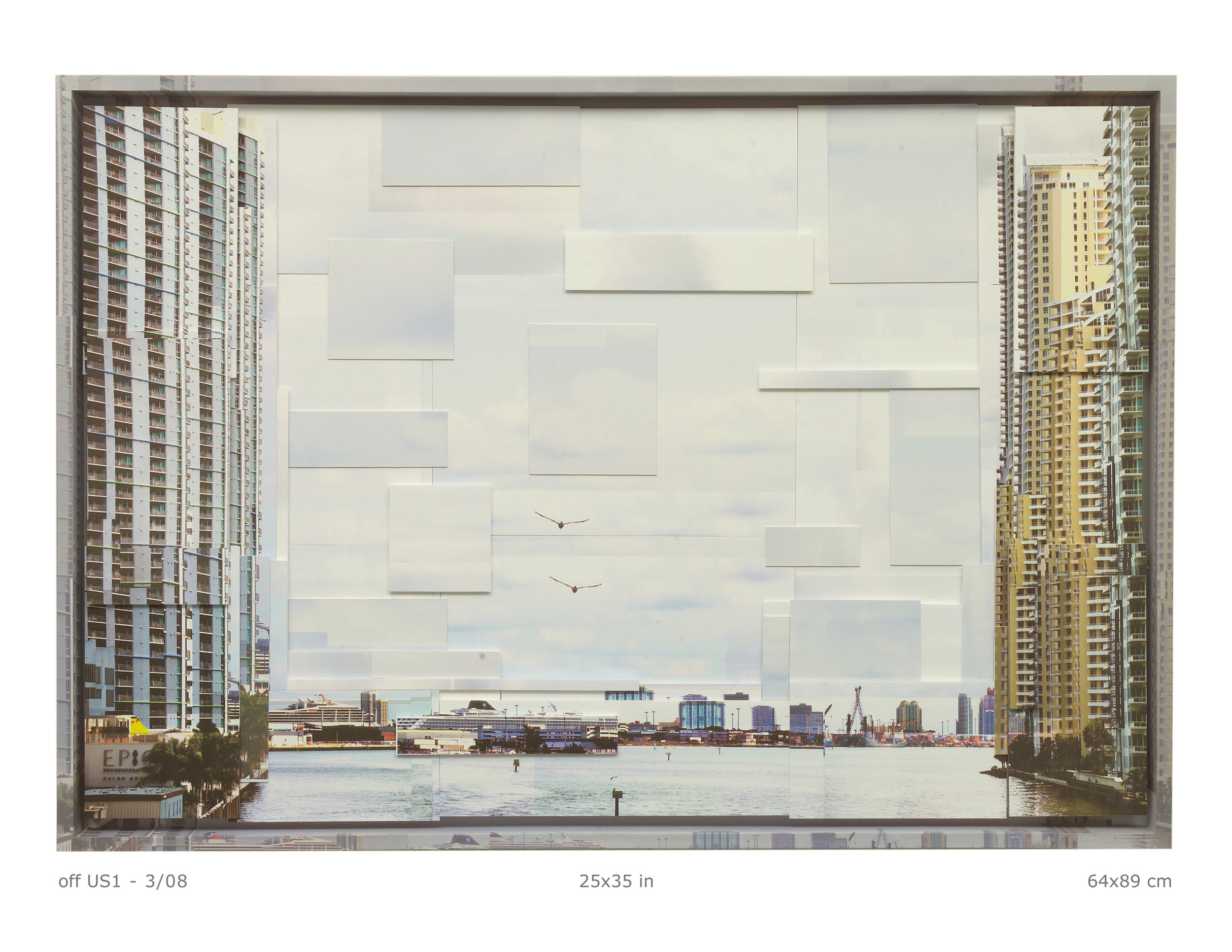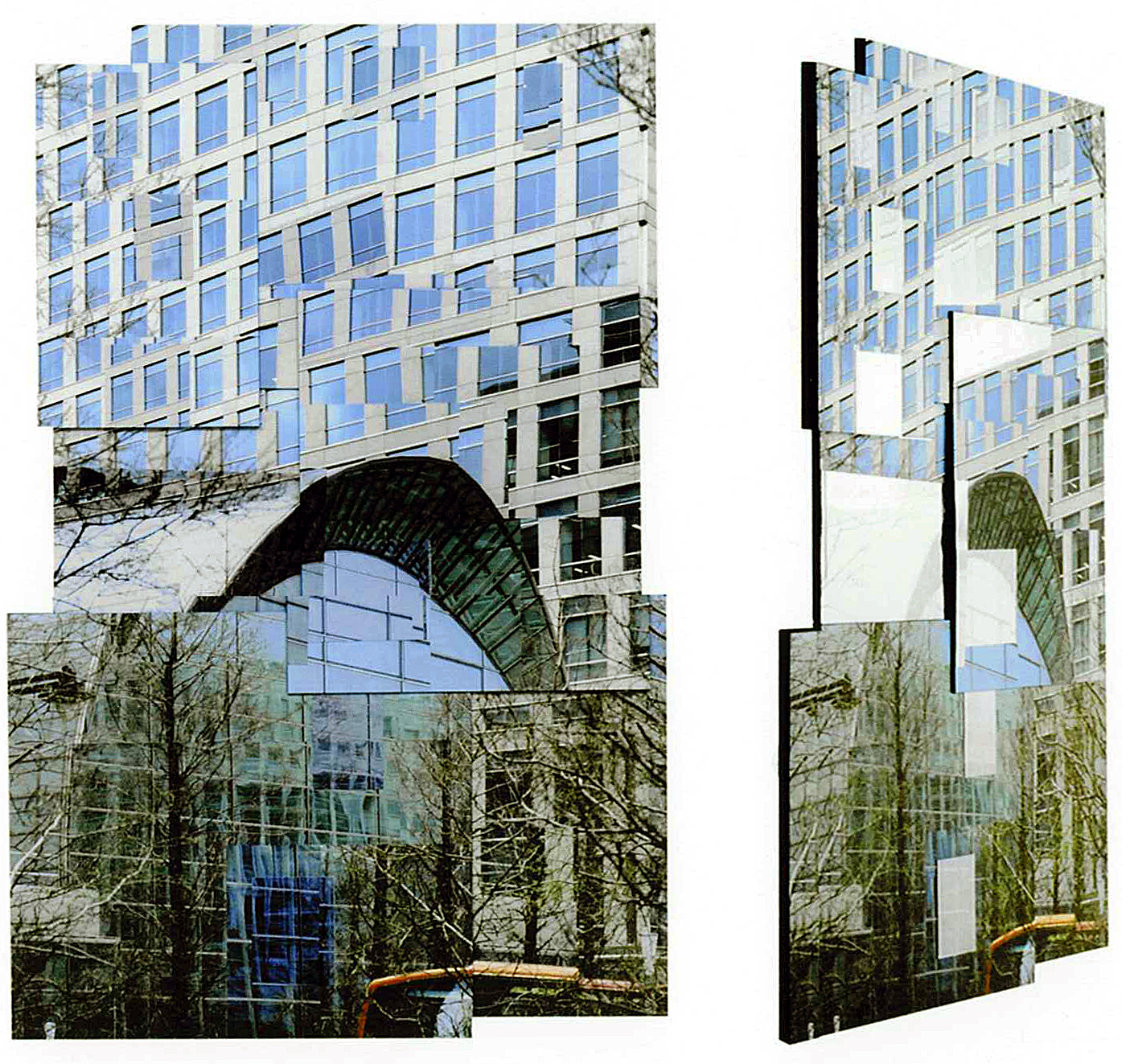Walter Nelson's The Darwin Shrines
May 8 - June 27, 2009
The works in the exhibit were inspired by the death of Nelson's beloved dog Darwin, for whom he constructed and photographed the shrines included in the exhibit. Nelson built his first shrine atop the Pedernal, a flat topped mountain near Abiquiu, NM, out of sticks, grass and rocks he found on site to honor the life and memory of his dog. Nelson then went on to build two more shrines in New Mexico, one in Texas and eight more while on a trip across Europe. His photographs of the shrines, along with three unique Earthworks sculptures created in the gallery, comprised the installation for the [Artspace] at Untitled exhibit.
What influences an artist? How does an artist determine what to create at any given time and in any given place? For one it may be the loss of man's best friend that is the impetus, for another it can be the barrage of imagery that breaks down into a sort of visual fragmentation of their surroundings. Both of these answers point to the origin of the photographs of Walter Nelson and Phil Stein in their respective exhibits, The Darwin Shrines and Streets.
nterestingly, both artists have had commercial careers and worked in New York at the center of the advertising world. A native of Wichita Nelson becamee a photographer in Houston in the late 1960s and moved to Manhattan in 1979 to specialize in fashion and fragrance photography. While in New York, he also started experimenting with drawing and painting. A magazine assignment in New Mexico in 1981 provided a life-changing experience for Nelson who was immediately attracted to the colorful landscape and mesas surrounding Abiquiu, the final home of painter Georgia O'Keeffe. settling into a new life in New Mexico in the mid 1980s, Nelson continued to photograph and additionally created paintings and three-dimensional sculptues influenced by the desert environment.
On July 1, 1999, Nelson's long time companion, a red heeler named Darwin Augustus Perth died in his arms. In tribute to his friend, the artist climbed the Pedrenal, a flat topped mountain near Abiquiu, with the dog's ashes to build a shrine out of indigenous materials; sticks, stones, and hemp. "Walking into the landscape with only a ball of twine and Darwin's ashes, nature gave me the objects with which to create the shrine, only to go back to nature in his honor," states Nelson. Subsequently, another shrine was constructed in Henriett, Texas, then eleven more in New Mexico, and finally five were made while on a trip throughout Europe. All of the shrines weree produced over a two year period and photographed by Nelson. Ultimately the photographs were used in a limited editions artists' book.
s a special installation for [Artspace] at Untitled, Walter Nelson has produced three onsite shrines - or as he now calls them - Earthworks - made out of materials indigenous to Oklahoma. In both the shrines and Nelson's photographs, Darwin is not only remembered, but he has become a part of the creative process for the artists; an influence at a particular time and place in his life.
Press Gallery
Phil Stein's Streets
EXHIBITED ALONGSIDE THE DARWIN SHRINES, WAS PHIL STEIN'S SERIES STREETS COMPRISED OF MULTIPLE LAYER PHOTOGRAPHIC COLLAGES. STEIN BEGAN WORK ON HIS SERIES OF THREE-DIMENSIONAL FRAGMENTED COMPOSITIONS OF STREET SCENES IN 2004. HE IS HEAVILY INFLUENCED BY WHAT HE CALLS THE FRAGMENTED NATURE OF AMERICAN CULTURE ILLUSTRATED BY THE USE OF MULTIPLE IMAGERY, VISUAL AND MUSICAL SAMPLING, MULTITASKING, CONSTANT INTERRUPTION, AND THE IMMEDIACY OF CHANGE. STEIN'S UNIQUE METHOD OF CREATION INVOLVES MOUNTING PHOTOGRAPHS IN COMBINATIONS AND LAYERS TO CREATE COHESIVE YET VISUALLY "PIXILATED" IMAGES, APROPOS OF THOSE ELEMENTS OF SOCIETY STEIN IS INFLUENCED BY.
In stark contrast to Walter Nelson's work, are the images of Phil Stein. As a photographer based out of Bethleham, Pennsylvania, Stein makes his living primarily in the advertising business and has been exhibitint his fine art photographs since 2004 in galleries in New York, Chicago, San Francisco, Miami, and London. At the age of twelve, Stein began private studies of 'classical math, geometry, drawing, painting, and sculpture' which he paid for by being a janitor. In order to start his career, Stein worked night shifts in factories while pursuing freelance corporate photography during the day. An abiding interest in New York's Chelsea neighborhood and it's arts district led him to the process of making multiple image collages of the urban landscape. About his unique interpretation of New York street scenes Stein has stated, "As a kid I loved Cubism and Neo Placticism, the work of artists such as Piet Mondrian. Today, the internet has completely replaced TV and print media. I'm influenced by the random visual fragmentation that occasionally occurs in live streams and video downloads. My Streets series explores various themes of image reconstruction based on common algorithmic accidents."
As a unique element of Phil Stein's Streets exhibition at [Artspace] at Untitled, the artist came to Oklahoma City and photographed streets in both the downtown area and Untitled's surrounding neighborhood. Applying his muliple image process, he then created a video presentation of the Oklahoma City images to be shown in the gallery along with his New York street photographs. The proximity to the gallery further defines what influences these particular images and the immediacy of the presentation adds yet another layer to Stein's level of communication with the audience.

